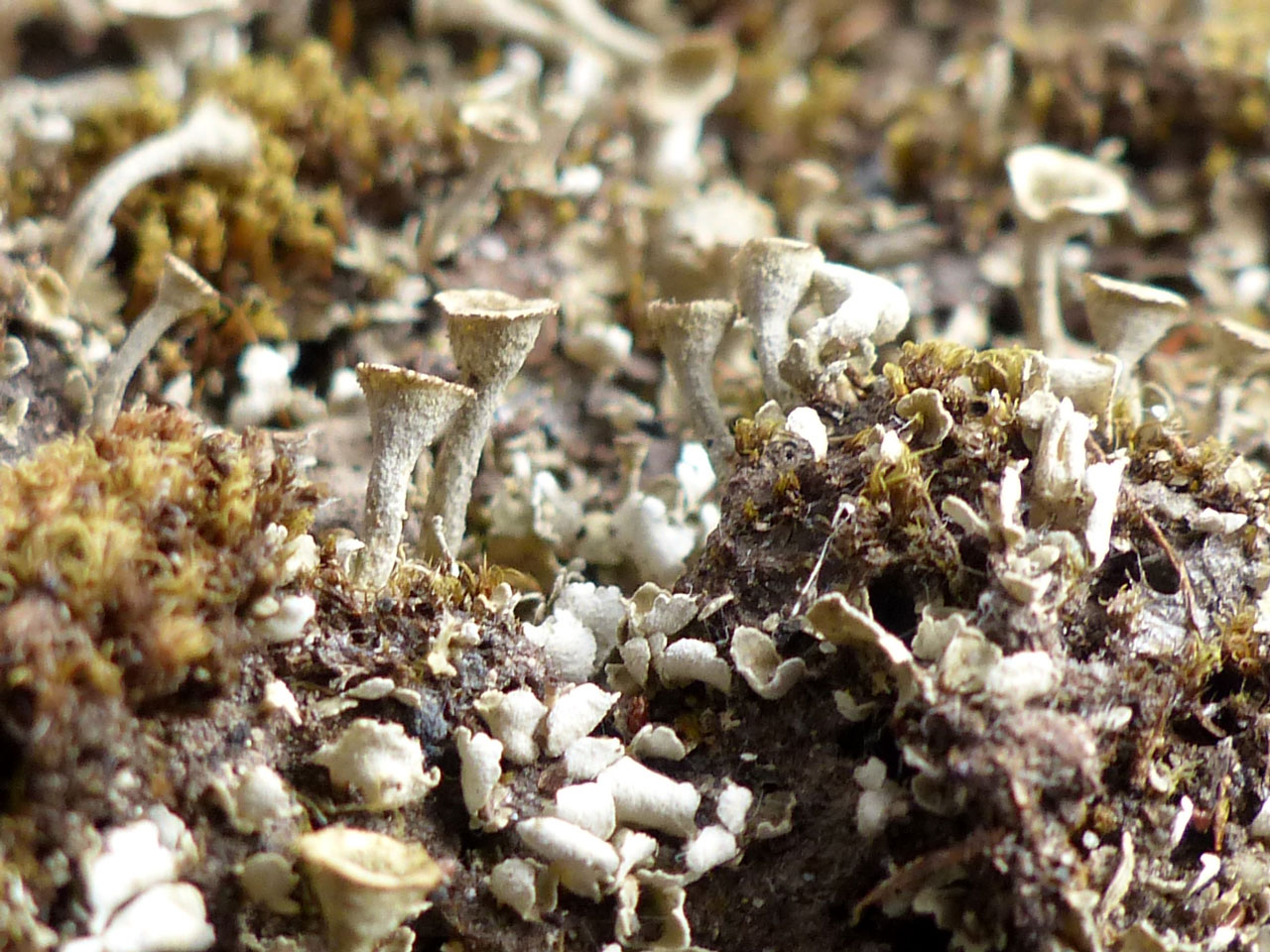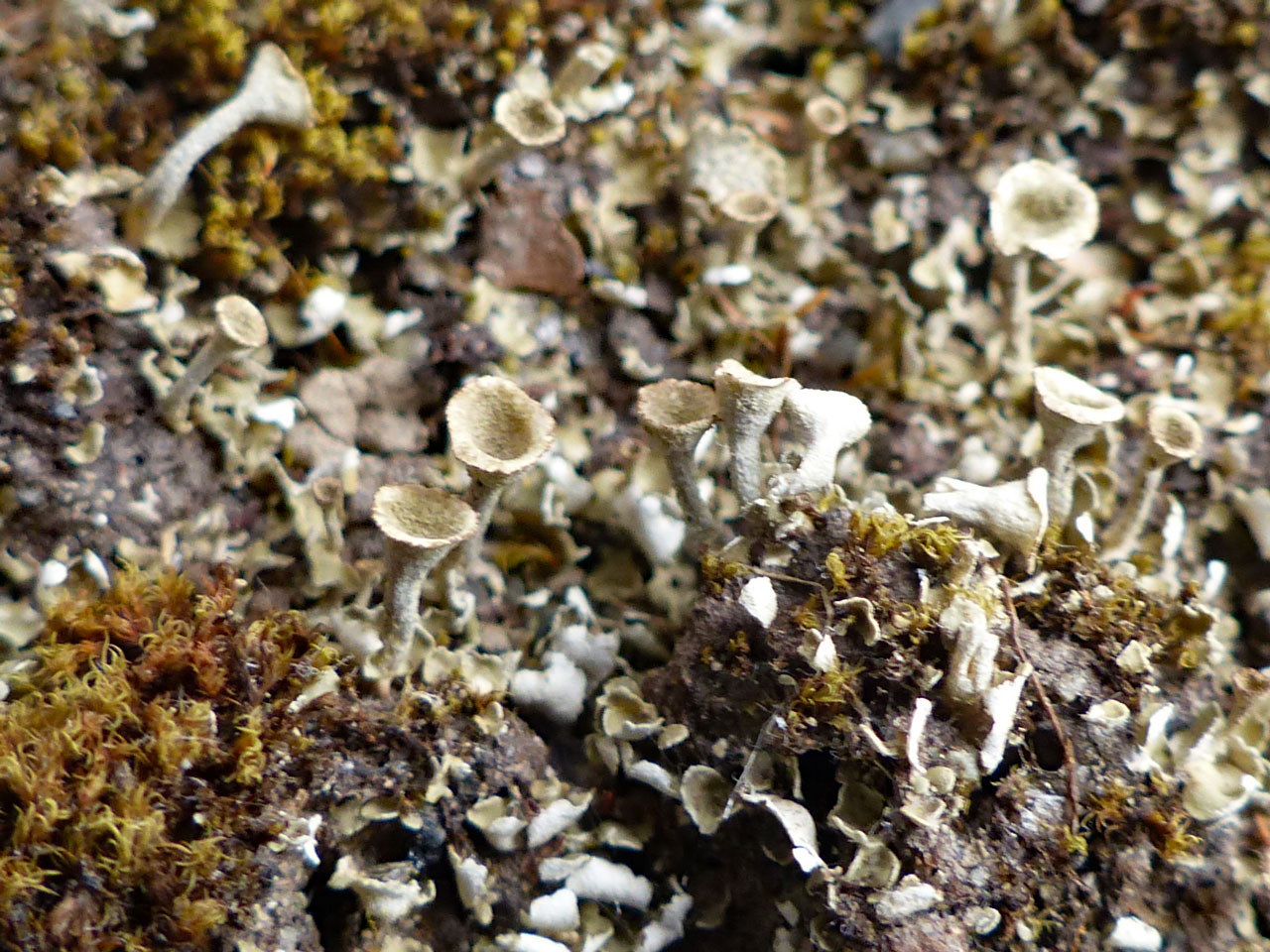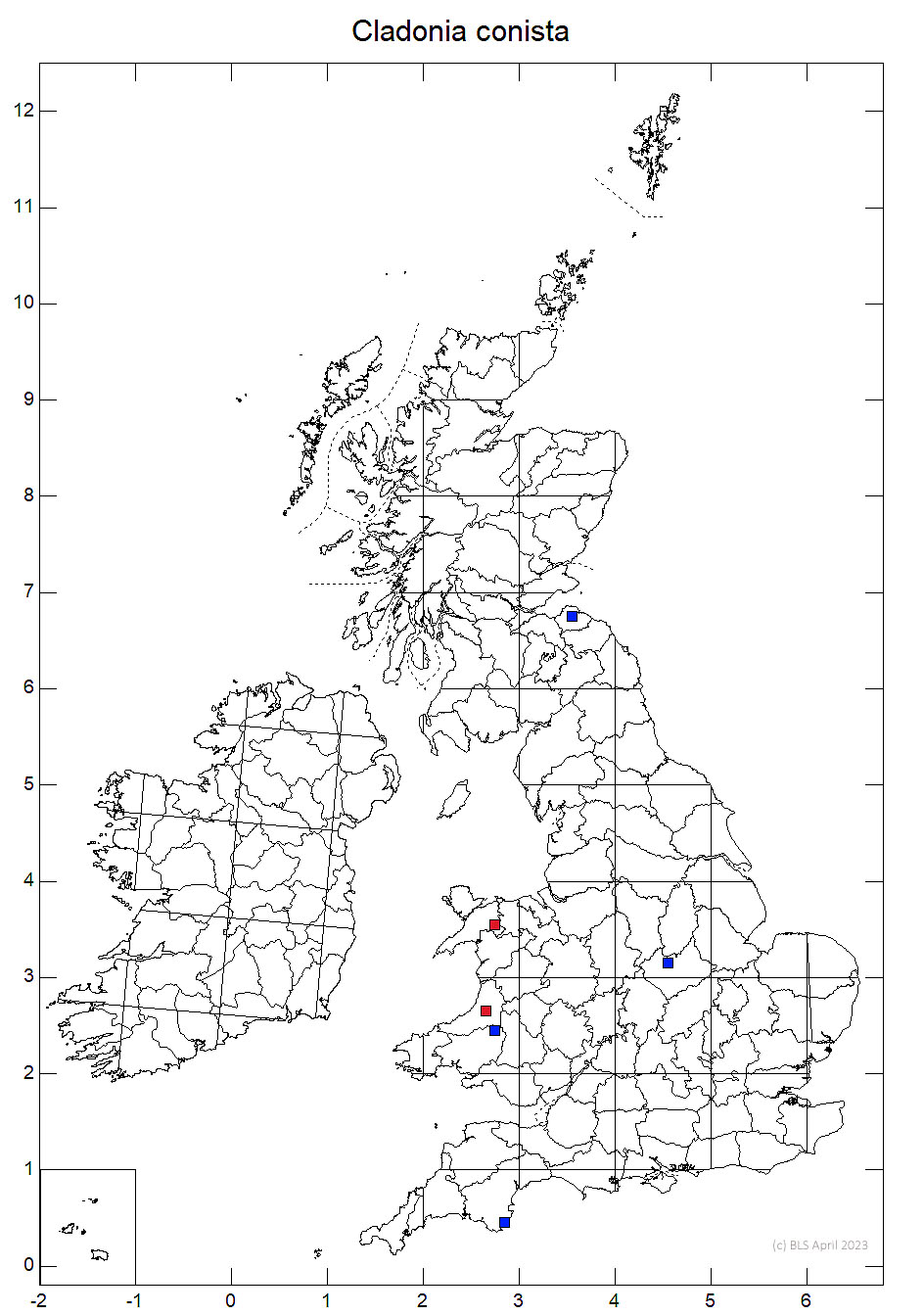Cladonia conista
A little known Pixie Cup, very similar to Cladonia humilis, with farinose soredia dominating the upper parts of the podetia, but with a corticate base. It is rarely recorded and certainly overlooked. Compared to C. humilis, it has a slightly taller and more slender podetial stalk and grows in an ecologically different habitat. It is found in noticeably more acidic habitats than those typical of C. humilis, with more diverse associated Cladonia species, typical of more oligotrophic/nutrient-poor acidic substrates. Confirmation is best by TLC, with C. conista containing (bourgeanic and fumarprotocetraric acids (K–, Pd+ red) and C. humilis containing atranorin and fumarprotocetraric acids (K+ yellow, Pd+ red).
Morphologically similar to Cladonia humilis, but tending to have slightly narrower and less abruptly flared cups with slightly longer stalks and smaller soredia, and with a different chemistry. Thallus C–, K–, KC–, Pd+ red, UV– (bourgeanic and fumarprotocetraric acids)
The species is commoner than Cladonia humilis in Scandinavia according to Ahti & Stenroos (2013), and could be more widespread in northern Britain, but the distribution is not well-known because TLC is necessary to distinguish it from C. humilis. They observe that morphs of C. fimbriata with corticate podetial stalks may be confused with C. conista, but are generally more robust and longer-stalked. The species was considered a chemotype of C. humilis by James (2009) but is now considered to be distinct (Pino-Bodas et al. 2012).
So far found on turf between boulders, in forestry tracks and on wall tops. In noticeably more acidic habitats than those that Cladonia humilis is typically found, with more diverse associated Cladonia species, typical of more oligotrophic/nutrient-poor acidic substrates.

England (Devon, Leicestershire), Scotland (E. Lothian, Mull) and Wales (Ceredigion, Carmarthenshire).
Britain: Not Evaluated
Ahti, T. & Stenroos, S. (2013). Cladoniaceae. In: Ahti, T., Stenroos, S., & Moberg, R. (eds), Nordic Lichen Flora 5: 1–117.
James, P.W. (2009). Cladonia. In: Lichens of Great Britain and Ireland(Smith, C.W., Aptroot, A., Coppins, B.J., Fletcher, A., Gilbert, O.L., James, P.W. & Wolselsey, P.A. eds): 309–338. London: British Lichen Society.
Pino-Bodas, R., Martín, M.P., Burgaz, A.R. & Lumbsch, H.T. (2012). Species delimitations in the Cladonia cariosa group (Cladoniaceae, Ascomycota). Lichenologist 44: 121–135.
Pino-Bodas, R., Sanderson, N., Cannon, P., Aptroot, A., Coppins, B., Orange, A. & Simkin, J. (2021). Lecanorales: Cladoniaceae, including the genera Cladonia, Pilophorus and Pycnothelia. Revisions of British and Irish Lichens 19: 1-45. Link
Text by N A Sanderson & S P Chambers, based Pino-Bodas et al (2021)


